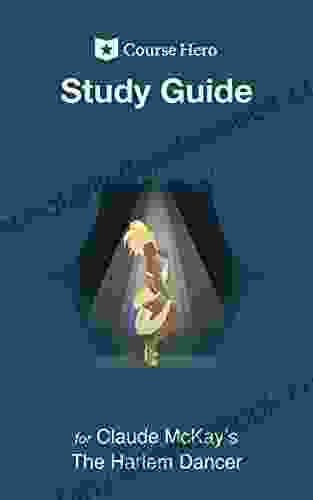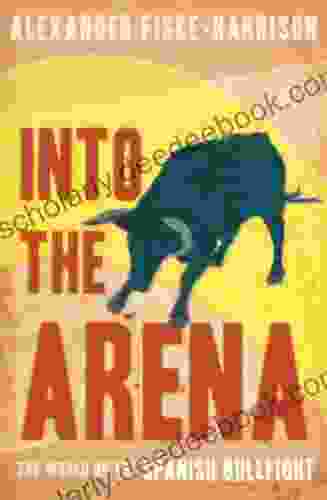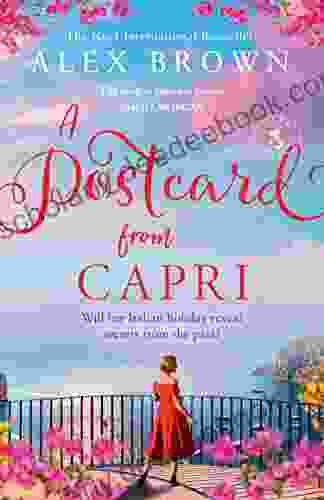A Comprehensive Study Guide for Claude McKay's "The Harlem Dancer": Exploring Themes, Symbolism, and Impact

Claude McKay's evocative poem "The Harlem Dancer" stands as a powerful testament to the complexities of race, gender, and identity in the Harlem Renaissance era. This comprehensive study guide delves into the intricacies of McKay's work, providing a thorough analysis of its themes, symbolism, and historical context.
Themes
1. The Marginalization of Black Women:
The poem vividly portrays the objectification and exploitation of Black women in a white-dominated society. The dancer is depicted as an exotic spectacle, performing for the amusement and gratification of a predominantly white audience. McKay's words expose the dehumanizing ways in which Black women were often treated, both as entertainers and as members of society.
4.6 out of 5
| Language | : | English |
| File size | : | 887 KB |
| Screen Reader | : | Supported |
| Print length | : | 32 pages |
| Lending | : | Enabled |
| Hardcover | : | 430 pages |
| Item Weight | : | 1.53 pounds |
| Dimensions | : | 5.5 x 1.13 x 8.5 inches |
2. Loss of Cultural Identity:
The Harlem Dancer's alienation from her African heritage is a central theme in the poem. She longs for a connection to her ancestors and the traditions of her homeland, but finds herself trapped within a world that denies her true identity. This sense of displacement and dislocation reflects the broader experience of many African Americans during the Harlem Renaissance era.
3. The Power of Art:
Despite her marginalized status, the dancer finds solace and a sense of expression through her art. The poem suggests that art can serve as a form of resistance against oppression and a means of reclaiming identity. The dancer's performance becomes a powerful symbol of Black resilience and creativity.
Symbolism
1. The Dancer's Body:
The dancer's body is a powerful symbol of both objectification and liberation. It is a site of both exploitation and self-expression, representing the complexities of Black women's experiences. Her body becomes a canvas for the projections of others, yet it also serves as a source of empowerment and agency.
2. The White Audience:
The white audience in the poem is a symbol of the oppressive forces that limit and constrain the dancer's life. Their gaze is both voyeuristic and judgmental, objectifying her and reducing her to a mere spectacle. This representation underscores the ways in which Black people were often exoticized and dehumanized by their white counterparts.
3. The African Drum:
The African drum, mentioned in the final stanza, symbolizes the dancer's lost cultural identity. Its absence in the dance represents her alienation from her African heritage and the ways in which slavery and colonization have severed the connection between African Americans and their ancestral traditions.
Historical Context
"The Harlem Dancer" emerged during the Harlem Renaissance, a period of cultural and intellectual flowering among African Americans in the early 20th century. The poem reflects the complex social and cultural dynamics of the era, including the migration of African Americans to urban centers like Harlem, the rise of a Black middle class, and the ongoing struggle for civil rights.
The poem's portrayal of the Harlem nightclub scene captures the vibrant yet often exploitative nature of the entertainment industry during this time. Black performers were often relegated to stereotypical roles and faced discrimination and prejudice, both on and off the stage.
Literary Devices
1. Imagery:
McKay uses vivid imagery to create a powerful and evocative atmosphere in the poem. The sensual details of the dance, the contrast between the dancer and her audience, and the symbolic use of the drum all contribute to a rich and multilayered sensory experience.
2. Metaphor:
The dancer is often described in metaphorical terms, such as "a tiger" or "a flame." These metaphors convey her strength, resilience, and passion, while also highlighting her animalistic and sexualized nature.
3. Rhythm and Musicality:
The poem's rhythm and musicality echo the movement of the dancer and the beat of the African drum. McKay's use of syncopation and repetition creates a sense of energy and urgency, capturing the vitality and exuberance of the Harlem Renaissance era.
Impact and Legacy
"The Harlem Dancer" stands as one of the most enduring and influential poems of the Harlem Renaissance. It has been widely anthologized and studied, inspiring countless interpretations and adaptations. The poem's poignant portrayal of the experiences of Black women and its exploration of the complexities of identity continue to resonate deeply with readers today.
McKay's work has had a profound impact on subsequent generations of writers, artists, and activists. His commitment to social justice and his celebration of Black culture have made him an enduring figure in American literature and a symbol of the Harlem Renaissance's legacy of resistance and empowerment.
Study Questions
1. How does McKay's poem reveal the ways in which Black women were marginalized and objectified during the Harlem Renaissance? 2. Discuss the significance of the dancer's body as a symbol in the poem. How does it embody both oppression and liberation? 3. Analyze the role of the white audience in the poem. What do they represent, and how do they contribute to the poem's themes? 4. How does the historical context of the Harlem Renaissance influence the poem's subject matter and its portrayal of race and identity? 5. Identify the literary devices used by McKay in the poem and discuss how they contribute to its overall impact and meaning. 6. What is the poem's lasting legacy, and how has it shaped contemporary perspectives on race, gender, and identity?
Claude McKay's "The Harlem Dancer" is a poetic masterpiece that captures the complexities, contradictions, and vibrant energy of the Harlem Renaissance era. Through its exploration of themes such as marginalization, identity loss, and the power of art, the poem provides a profound and enduring reflection on the experiences of Black people in America. By delving into its intricacies, we gain a deeper understanding of the historical and social forces that have shaped our society and continue to resonate today.
4.6 out of 5
| Language | : | English |
| File size | : | 887 KB |
| Screen Reader | : | Supported |
| Print length | : | 32 pages |
| Lending | : | Enabled |
| Hardcover | : | 430 pages |
| Item Weight | : | 1.53 pounds |
| Dimensions | : | 5.5 x 1.13 x 8.5 inches |
Do you want to contribute by writing guest posts on this blog?
Please contact us and send us a resume of previous articles that you have written.
 Text
Text Library
Library Paperback
Paperback E-book
E-book Newspaper
Newspaper Paragraph
Paragraph Shelf
Shelf Bibliography
Bibliography Foreword
Foreword Preface
Preface Footnote
Footnote Manuscript
Manuscript Codex
Codex Tome
Tome Bestseller
Bestseller Classics
Classics Library card
Library card Narrative
Narrative Biography
Biography Autobiography
Autobiography Dictionary
Dictionary Narrator
Narrator Librarian
Librarian Catalog
Catalog Card Catalog
Card Catalog Borrowing
Borrowing Stacks
Stacks Periodicals
Periodicals Scholarly
Scholarly Reserve
Reserve Academic
Academic Journals
Journals Reading Room
Reading Room Literacy
Literacy Study Group
Study Group Thesis
Thesis Storytelling
Storytelling Awards
Awards Reading List
Reading List Textbooks
Textbooks Hannah Tovey
Hannah Tovey Holly Moulder
Holly Moulder Christopher G Nuttall
Christopher G Nuttall Ronald Malfi
Ronald Malfi Pat Warren
Pat Warren Olivier Urbain
Olivier Urbain Shannon Brinkley
Shannon Brinkley Frank Voehl
Frank Voehl Anaezi Modu
Anaezi Modu Edward M Hallowell
Edward M Hallowell Karoly Vamos
Karoly Vamos Melissa Ackerman
Melissa Ackerman Gili Guggenheim
Gili Guggenheim Kathryn Reiss
Kathryn Reiss Lisa Waters
Lisa Waters Sherri Duskey Rinker
Sherri Duskey Rinker C C Lyons
C C Lyons Tony Porter
Tony Porter Sofia Diana Gabel
Sofia Diana Gabel Jessica Labar Twomey
Jessica Labar Twomey
Light bulbAdvertise smarter! Our strategic ad space ensures maximum exposure. Reserve your spot today!

 Wayne CarterVoyager, Deep Space Nine, and Enterprise: A Comprehensive Look at The Next...
Wayne CarterVoyager, Deep Space Nine, and Enterprise: A Comprehensive Look at The Next...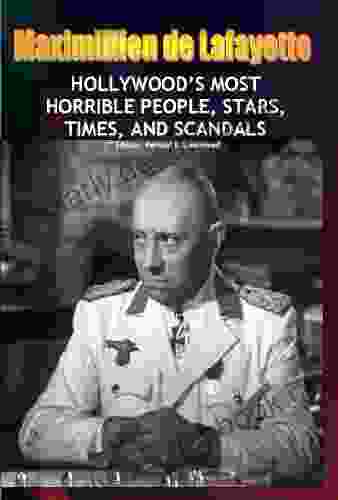
 Ryan Foster8th Edition Revised Condensed Hollywood's Most Horrible People: Stars, Times,...
Ryan Foster8th Edition Revised Condensed Hollywood's Most Horrible People: Stars, Times,... Dylan MitchellFollow ·6.9k
Dylan MitchellFollow ·6.9k Trevor BellFollow ·15.2k
Trevor BellFollow ·15.2k Timothy WardFollow ·2.7k
Timothy WardFollow ·2.7k Kenneth ParkerFollow ·19.8k
Kenneth ParkerFollow ·19.8k Julian PowellFollow ·15.2k
Julian PowellFollow ·15.2k Chuck MitchellFollow ·11.2k
Chuck MitchellFollow ·11.2k D'Angelo CarterFollow ·18.3k
D'Angelo CarterFollow ·18.3k Jamison CoxFollow ·5k
Jamison CoxFollow ·5k
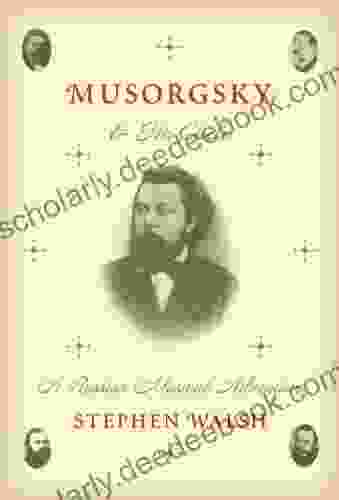
 Houston Powell
Houston PowellMusorgsky and His Circle: A Russian Musical Revolution
Modest Mussorgsky was a Russian...
 Barry Bryant
Barry BryantRanking the 80s with Bill Carroll: A Nostalgic Journey...
Prepare to embark on a captivating...

 Kelly Blair
Kelly BlairThe Diplomat's Travel Guide to Festivals, Holidays, and...
India is a land of vibrant culture and...
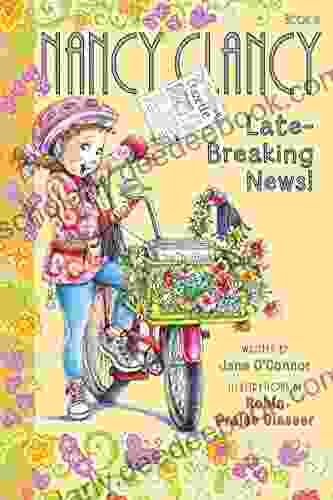
 José Saramago
José SaramagoFancy Nancy Nancy Clancy: Late-Breaking News!
Nancy Clancy is back with all-new adventures...
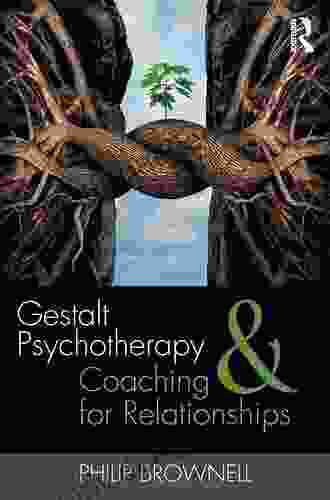
 Trevor Bell
Trevor BellGestalt Psychotherapy and Coaching for Relationships: A...
Relationships...
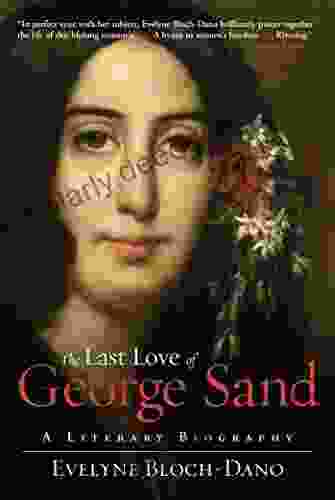
 Federico García Lorca
Federico García LorcaThe Last Love of George Sand: An Enduring Legacy of...
At the twilight of her remarkable life,...
4.6 out of 5
| Language | : | English |
| File size | : | 887 KB |
| Screen Reader | : | Supported |
| Print length | : | 32 pages |
| Lending | : | Enabled |
| Hardcover | : | 430 pages |
| Item Weight | : | 1.53 pounds |
| Dimensions | : | 5.5 x 1.13 x 8.5 inches |


